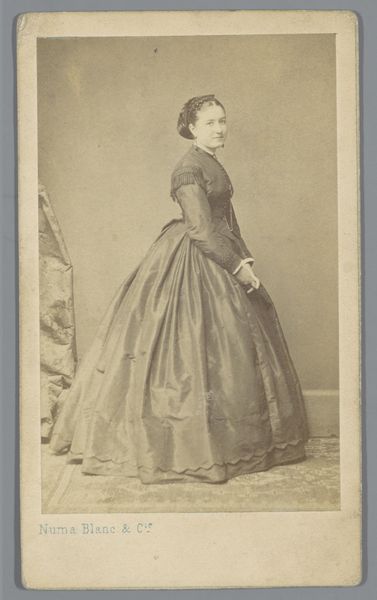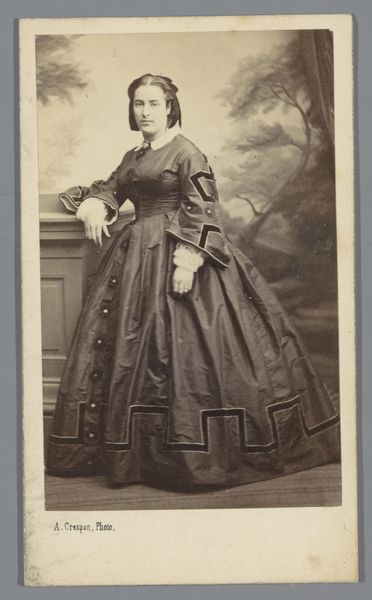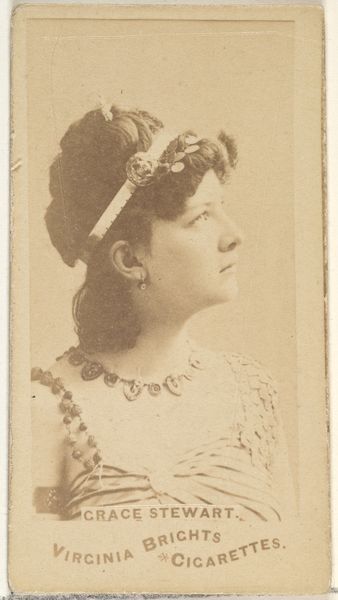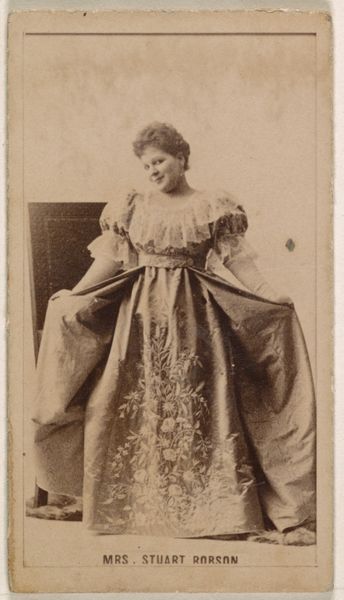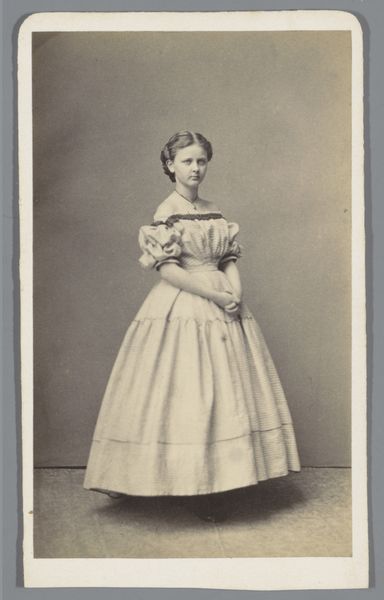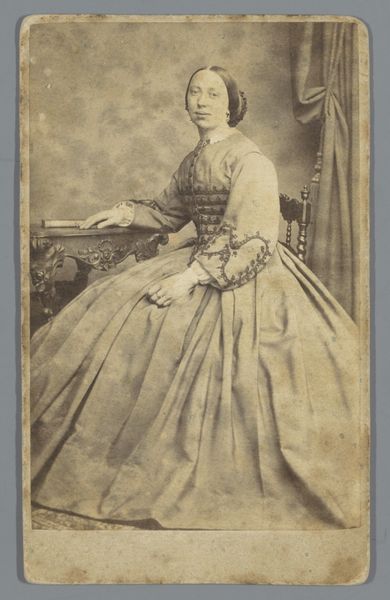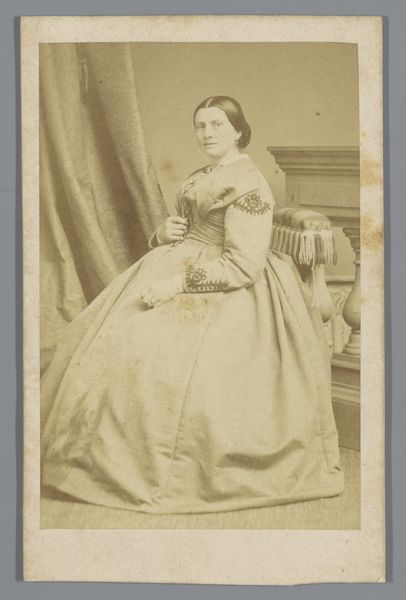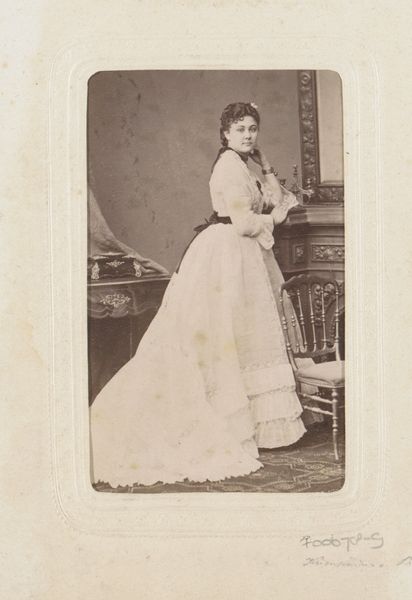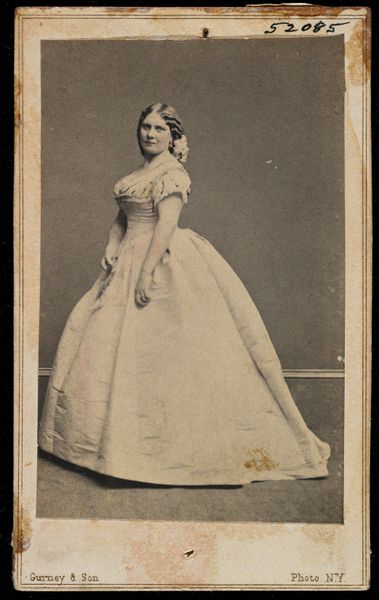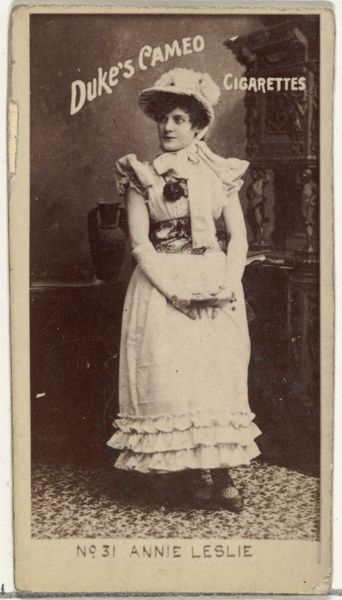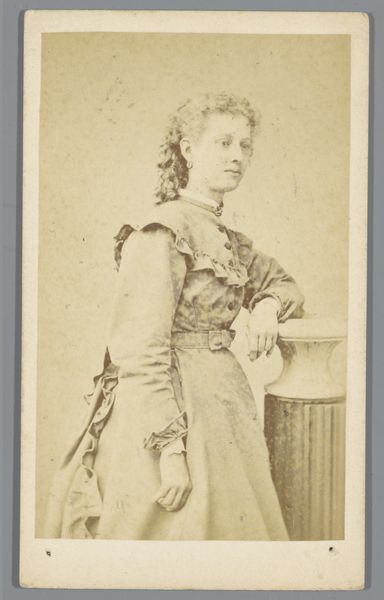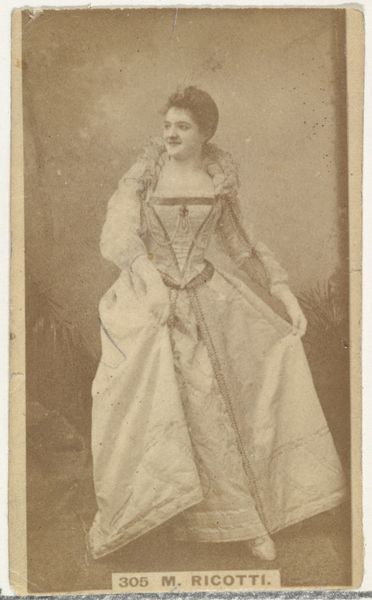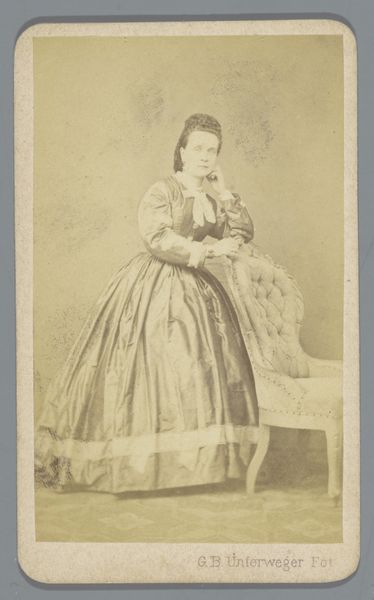![Untitled [portrait of an unidentified woman (actress -)] by Jeremiah Gurney](/_next/image?url=https%3A%2F%2Fd2w8kbdekdi1gv.cloudfront.net%2FeyJidWNrZXQiOiAiYXJ0ZXJhLWltYWdlcy1idWNrZXQiLCAia2V5IjogImFydHdvcmtzLzZhNGI2MTkzLTA1ZWQtNGJkYy1hOTI3LTczOGFlNzUyYTkwNy82YTRiNjE5My0wNWVkLTRiZGMtYTkyNy03MzhhZTc1MmE5MDdfZnVsbC5qcGciLCAiZWRpdHMiOiB7InJlc2l6ZSI6IHsid2lkdGgiOiAxOTIwLCAiaGVpZ2h0IjogMTkyMCwgImZpdCI6ICJpbnNpZGUifX19&w=3840&q=75)
Untitled [portrait of an unidentified woman (actress -)] 1858 - 1869
0:00
0:00
photography, albumen-print
#
portrait
#
photography
#
albumen-print
Dimensions: 3 5/8 x 2 1/8 in. (9.21 x 5.4 cm) (image)4 1/8 x 2 7/16 in. (10.48 x 6.19 cm) (mount)
Copyright: Public Domain
Editor: Here we have an albumen print from between 1858 and 1869, made by Jeremiah Gurney; it is a portrait of an unidentified woman. She has a direct gaze but averted slightly to the left, and it feels very poised and deliberate. What can you tell me about this kind of photographic portrait in this historical moment? Curator: These carte-de-visite portraits were revolutionary in their democratizing influence. Suddenly, photography offered a means of representation previously only accessible through painting, a medium restricted to the wealthy. They also served a profound social function, didn't they? Editor: Oh, you mean how people would collect and exchange them? Almost like social media, in a way. Curator: Precisely! Photography studios arose, becoming important sites in urban centers, contributing to visual culture and how people shaped their identity in relation to the public eye. Can you imagine the photographer dictating every single aspect of pose, clothes, and props to be used? It became an industry unto itself, dictating styles and setting beauty standards. Look at how Gurney meticulously controls the lighting and shadow, isn't it theatrical? Editor: Yes, I noticed how the dress is bright and illuminated. Do you think being an actress shaped how she presents herself for the camera? Curator: It's plausible, adding another layer of performance to this small image. Knowing that she was an actress gives you a peek into the theater scene, highlighting how it intermingled with public perception. It’s fascinating how even in a relatively standardized format, clues exist for a rich social history. Editor: That makes me rethink the amount of thought that goes into constructing what the public sees in terms of identity, versus just thinking of these as plain portraits. Thanks! Curator: It goes both ways. Thinking about how photography affected painting and other modes of representations in a changing social landscape really enhances my understanding as well.
Comments
No comments
Be the first to comment and join the conversation on the ultimate creative platform.
